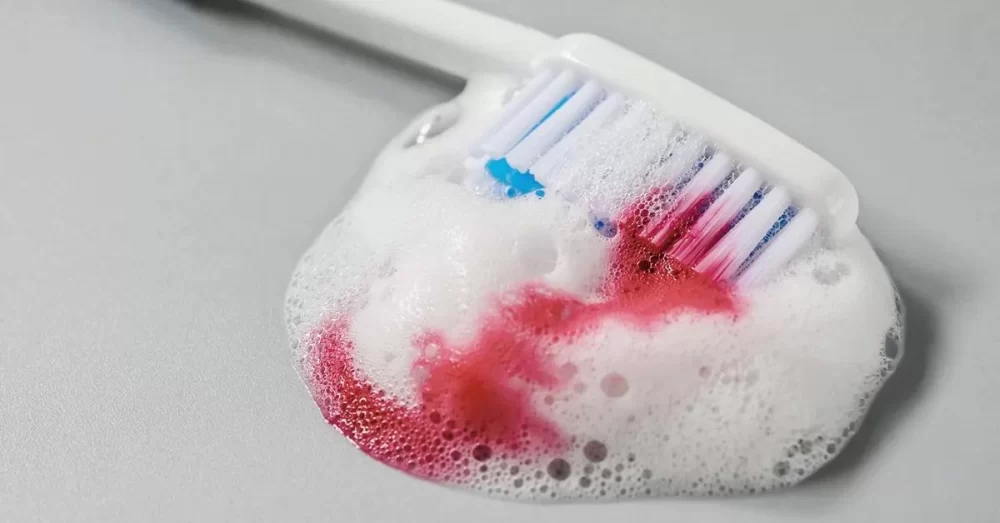
- Understanding Gum Bleeding After Dental Cleaning
- Causes of Bleeding Gums Post-Cleaning
- Practical Steps to Prevent Gum Bleeding
- Personal Experience and Case Study
- Long-Term Oral Care Recommendations
Understanding Gum Bleeding After Dental Cleaning
After a professional dental cleaning, it's quite common for some people to experience gum bleeding. This happens because the cleaning process removes plaque and tartar buildup that irritates the gums, often exposing sensitive gum tissue. The key to preventing gum bleeding after dental cleaning lies in understanding the delicate balance between effective cleaning and gentle care of your gums. Many people wonder how to prevent gum bleeding after dental cleaning without compromising the thoroughness of the treatment.
It's important to note that minor bleeding immediately after cleaning is normal but should not persist. Persistent bleeding can signal underlying issues like gum disease or improper oral care techniques. Approaching post-cleaning care with the right knowledge and habits ensures faster healing and healthier gums.
Causes of Bleeding Gums Post-Cleaning
1. Sensitive Gum Tissue Due to Plaque Removal
During dental cleaning, tartar and plaque removal can leave gums raw and sensitive. The gums may bleed as they start to heal from this intervention.
2. Pre-existing Gum Conditions
If a person has gingivitis or early-stage periodontal disease, their gums are more prone to bleeding even with routine cleaning. This is because the inflammation weakens gum tissue resilience.
3. Aggressive Brushing or Flossing Post-Cleaning
Many people try to maintain cleanliness aggressively after their dental visit. However, harsh brushing or flossing too soon can exacerbate bleeding and delay healing.
4. Medications and Health Factors
Certain medications like blood thinners or systemic conditions such as diabetes may increase the likelihood of gum bleeding. Awareness of these factors helps tailor care strategies.
Practical Steps to Prevent Gum Bleeding
1. Gentle Oral Hygiene Routine
Switch to a soft-bristled toothbrush and use gentle, circular brushing motions rather than harsh scrubbing. After dental cleaning, avoid flossing aggressively for a day or two to allow gums to recover.
2. Use a Therapeutic Mouthwash
Incorporate an antiseptic or saltwater rinse recommended by dental professionals to reduce bacteria and soothe inflamed gums.
3. Maintain Proper Hydration and Nutrition
Drinking plenty of water and eating foods rich in vitamins C and K can strengthen gum tissue and promote healing.
4. Avoid Irritants
Stay away from tobacco products, excessive alcohol, and very hot or spicy foods that might aggravate gum tissue after cleaning.
5. Follow Professional Advice
Your dentist or hygienist may provide personalized tips or recommend specific products to support your gum health. Consistently following this guidance is critical.
Personal Experience and Case Study
Jane, a 34-year-old dental patient, experienced persistent gum bleeding after several cleanings despite brushing regularly. Upon visiting Dentistry Toothtruth for a consultation, it was discovered that her aggressive flossing was causing micro-tears in her healing gums. By switching to gentler flossing techniques and using a prescribed therapeutic mouthwash, Jane saw significant improvement within a week. This example highlights how subtle adjustments in oral care can drastically reduce gum bleeding post-cleaning.
Such real-life stories emphasize the importance of personalized care and highlight why patients should seek expert advice when faced with bleeding gums after dental visits. The team at Dentistry Toothtruth offers tailored consultations and a selection of the most suitable dental care products for those struggling with similar issues.
Long-Term Oral Care Recommendations
1. Regular Dental Visits
Consistent professional cleanings and check-ups help monitor gum health and catch any problems early.
2. Adopt Preventive Habits
Daily brushing twice a day with fluoride toothpaste, flossing correctly, and rinsing with an antibacterial mouthwash form the cornerstone of gum care.
3. Lifestyle Choices
Maintaining a balanced diet, quitting smoking, and managing stress contribute significantly to healthy gums and reduced bleeding risks.
4. Use Products Suited to Your Needs
At Dentistry Toothtruth, you can find products specially formulated for sensitive gums, such as soft toothbrushes and soothing rinses, ensuring your oral care routine supports healing and prevention effectively.
With consistent attention and professional support, preventing gum bleeding after dental cleaning becomes manageable, leading to healthier gums and a more confident smile.







 Summit Dental Care4.0 (124 review)
Summit Dental Care4.0 (124 review) Fair Oaks Orthodontics5.0 (29 review)
Fair Oaks Orthodontics5.0 (29 review) Dental Care of North Fort Myers4.0 (708 review)
Dental Care of North Fort Myers4.0 (708 review) Sarkissian Dentistry: Robert Sarkissian, DDS, MAGD5.0 (84 review)
Sarkissian Dentistry: Robert Sarkissian, DDS, MAGD5.0 (84 review) Root 66 Endodontics4.0 (16 review)
Root 66 Endodontics4.0 (16 review) Scott Soderquist, DDS, MS0.0 (0 review)
Scott Soderquist, DDS, MS0.0 (0 review) The Importance of Oral Health Education During Pregnancy for a Healthy Pregnancy
The Importance of Oral Health Education During Pregnancy for a Healthy Pregnancy Best Tips for Brushing Your Teeth Properly for Healthy Gums: Essential Techniques for Oral Health
Best Tips for Brushing Your Teeth Properly for Healthy Gums: Essential Techniques for Oral Health Why Skipping Dental Checkups Can Lead to Bigger Oral Health Problems
Why Skipping Dental Checkups Can Lead to Bigger Oral Health Problems Advantages of Porcelain Dental Restorations
Advantages of Porcelain Dental Restorations How Can Diabetes Cause Tooth and Gum Problems? Preventing and Managing Oral Health Issues
How Can Diabetes Cause Tooth and Gum Problems? Preventing and Managing Oral Health Issues Healthy Habits for Promoting Good Oral Health and Hygiene: Tips for a Healthy Smile
Healthy Habits for Promoting Good Oral Health and Hygiene: Tips for a Healthy Smile